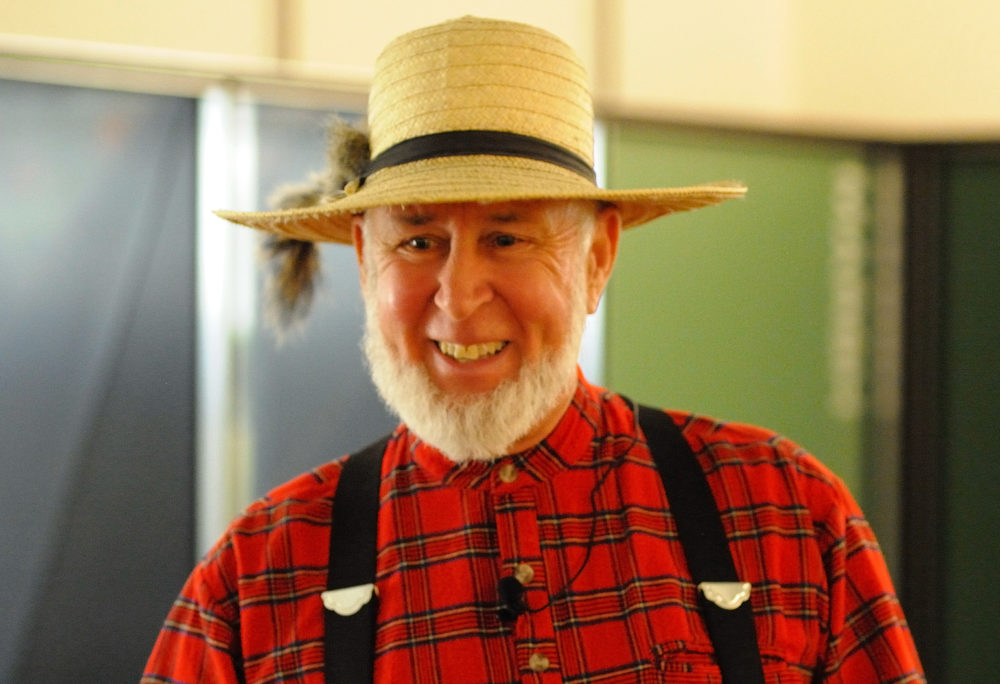“Yeowww!” I screamed when the tuft of tall grass I was using to pull myself up over the edge of the cliff uprooted and sent me tumbling. “Oooff!” was the sound I made as I landed flat on my back. Fortunately it was a short cliff, and I hadn’t fallen far, just far enough to knock the wind out of me. I lay there looking skyward, noticing from this position a turkey vulture soaring far above me. Joey and Remy, who had been ahead of me as we climbed scrambled back down to where I was sprawled. “Yeah, yeah, I’m OK,” I said before they could ask. “I should have held on to that Alder bush instead.”
It was a Saturday in May, a day when boys should be out at play. We had set out early, with a sandwich in our pockets and our scout canteens full of water. We were off to climb the “flats.” I suppose I should say we were off to climb to the flats, as the term itself referred to the very top of the big hill alongside Chartiers Creek that had been leveled off years ago by coal strippers. The top was “flat”, more or less, and it was one of the favorite playgrounds for us Thomas Street kids.
We could have walked farther along Steubenville Pike, which is what Crafton’s Steuben Street becomes after it crosses the Thornburg Bridge, and then have walked up a long dirt road to the top of the hill. But what fun would that have been? It was much more exciting to actually climb the side of the hill above the creek. It was a steep climb. There were many places where you had to grab onto a tree, a bush, a rock – anything – and pull yourself up. Most of the rock that was exposed was loose shale, which crumbled underfoot when any weight was put onto it. There weren’t any big trees growing on the hill side, but there were lots of small Aspens and Birches in addition to the Alders. They were pretty safe bets to hold on to. The higher we went, the better was the view. We could see up the creek to the Thornburg golf course, and down the creek to the Scully railroad yards.
I had scared myself falling like that, but I couldn’t let the other guys know, so I calmly took my now somewhat squashed sandwich from my jacket pocket and announced, “I think I’ll have some lunch.” I really was allright, except for a sore spot on my hip where I had landed right on my Boy Scout knife which was hanging from my belt by the official Boy Scout knife clip. It didn’t take long for hungry boys to eat sandwiches, so we were soon on our way again, but not until after we spent several minutes sailing rocks down toward the railroad tracks. There weren’t many round rocks, the good-for-throwing kind, on the hill. You could wiggle loose a chunk of the layered shale and sail it like a frisbee. None of us ever actually reached the railroad tracks – they were too far away – but it was fun to try.
A little more climbing and we were at the top, up on the “flats” – we had reached our destination. There was an old steam-shovel that had been abandoned years ago when the coal was dug out of the hill. More likely a diesel-engine had powered it, but we called it a steam-shovel anyway. Whatever its name, it was fun to climb on and over. We would take turns sitting in the cab – most of the seat was still there – and pushing the rusty levers, pretending that we were running this huge machine. It was a grand toy for a bunch of boys.
From the shovel, we went over to the edge of a pit, a deep hole full of water. This too was a place to throw stones, more of the flat shale. We tried to “skip” the flat pieces of rock, but we were too far up above. We always heard, from whichever source kids “hear” things, that the big kids, the high school kids, went skinny-dipping here. None of us ever went past the edge of the pit. The water was dark, we just knew it was deep. Even now I recall it as a scary place.
On the other side of the pit there were always spent casings from .22 caliber bullets. The same big kids who swam in the pit must have used it as a target range too. We collected the brass cartridges, put them in our pockets, and took them home. Of course you had to remember to take them out and hide them with other “treasures”. It wouldn’t have been good if a pocket full of bullets had turned up in Mom’s washing machine. I used to put mine in a can that I buried down in the woods behind the house. The can has probably rusted away by now – the pile of brass is probably still there.
After checking out a few other places, and finishing the last of the water we had brought along, it was time to head for home. We took the road down to Steubenville Pike. Climbing up the hill was fun – climbing down was work. In no time at all we were back across Thornburg Bridge, up Steuben Street, and if we were lucky, had fifteen cents for an ice cream cone at the Dairy Queen.
“Where have you been?” Mom would ask when I got home. “Me and the guys went up the ‘flats’,” I would reply. “We always have fun there.” Of course I didn’t tell her I had fallen down a cliff, or been at the edge of a deep pit of water. There are some things that mothers just don’t really need to know.
